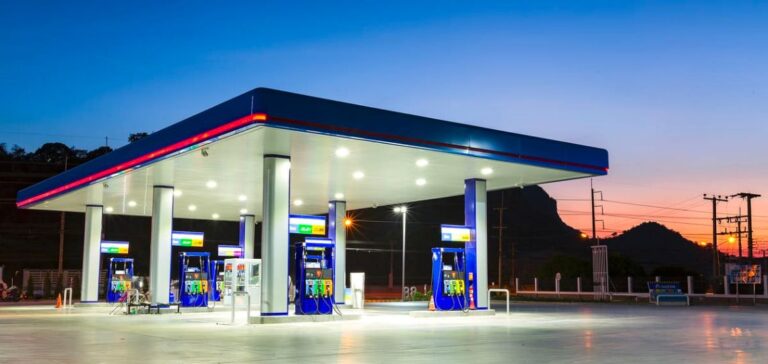Vintage pump in the hills of Vietnam, standardized rectangle in the parking lot of a Hungarian hypermarket, futuristic vessel in Dubai…: whatever its form, the gas station, emblem of modern societies, is undoubtedly on borrowed time in the era of energy transition.
With fuel prices rising sharply in the wake of the war in Ukraine, depletion of resources and the fight against global warming, the years of the combustion engine are now numbered.
This could sound the death knell – or at least the hour of a profound reconversion – for petrol stations, whose history is intertwined with that of the automobile boom at the beginning of the 20th century.
In Moscow, the oldest downtown station was built in the 1930s. And nine decades later, this sober cream and red building is still there, in the shadow of the Cathedral of Christ the Savior.
Some gas stations have become places of memory, like Blackwell’s Corner in the California desert. A huge portrait of James Dean reminds us that it is here, in 1955, that the Porsche of the actor of “La Fureur de vivre” made its last stop before the accident that was fatal to him 40 kilometers further.
The common feature of most gas stations is their canopy, which, in addition to providing protection from the weather, often serves the owner’s marketing strategy.
A design that has earned some of them listed status, like the Red Hill gas station, 170 kilometers north of London, with its six circular canopies characteristic of the 1960s.
Return to vegetation
With its whiteness, curves and neon lights, Beverly Hills gas station 76 evokes at night a spaceship sitting near the palm trees of Little Santa Monica Boulevard. British rocker Noel Gallagher, former guitarist for Oasis, chose this Googie-style building in 2011 for the cover of his debut album with the High Flying Birds.
But this “canopy” is not always so flashy. In many places, simple corrugated sheets will do the trick. That’s how it is in this community in Nimba County, Liberia, where fuel is sold by the jar, and refueling is done by the funnel.
In France, many of the small village shops have gone out of business. In 2021, there were just over 11,000 service stations in France, compared to 41,000 in the early 1980s. The reason is the competition from supermarkets, which have taken over the market share by siphoning off margins.
“In the 2000s, we diversified into garage and then car wash activities,” explains Francis Pousse, service station representative at Mobilians, which brings together French automotive service professionals.
“But margins have continued to fall, and faced with the investments needed to modernize, many managers have hung up their gloves. And the young people who buy garages-stations close the fuel part”.
How many villages still have memories of those distant days of small fuel shops? In Roaix, north of Marseille, an Antar badge and an old red pump are a reminder that this flea market on the side of the road has not always been one.
Elsewhere, as near Gjilan, Kosovo, some abandoned stations are being returned to vegetation, perhaps foreshadowing the fate of others when humanity turns the page on oil.
In the meantime, some are being recycled, like this former Tela gas station in Phnom Penh, which has taken the concept of ecological transition literally. We no longer buy fuel, but green plants.






















